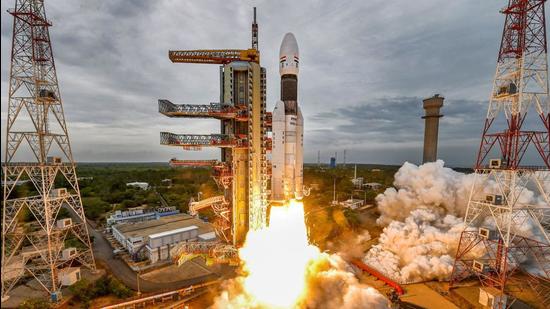Isro to launch EOS 3 aboard GSLV Mk III in its first flight since Chandrayaan-2
With the mission, the agency will resume the country’s space activities after a gap of over four months due to the second wave of the coronavirus disease (Covid-19) pandemic
The Indian Space Research Organisation (Isro) has confirmed that it will launch the earth observation satellite EOS-3 aboard its GSLV Mk III vehicle on August 12 at 5.43am from the country’s only spaceport at Sriharikota. With the mission, the agency will resume the country’s space activities after a gap of over four months due to the second wave of the coronavirus disease (Covid-19) pandemic.

“The launch is tentatively scheduled at 0543 hours IST on August 12, 2021, subject to weather conditions,” the space agency said in a release.
This will be the second operational flight of GSLV Mk III after the Chandrayaan-2 mission when the launch vehicle “over-performed” placing the spacecraft in a higher orbit and saving fuel for upcoming manoeuvres.
Also Read | Four ISRO launches over next 5 months; Gaganyaan delayed, Centre tells LS
This will be the first time that the vehicle’s payload fairing, the nose of the rocket where the satellites are carried, will be a 4m ogive (bullet-like shape). The changes will make the vehicle more aerodynamic and the same payload fairing is likely to be used for the country’s human spaceflight.
The EOS-3 satellite, also known as GISAT-1 as per previous nomenclature, is one of the two paired satellites, the other being GISAT—2 or EOS-5, that will be able to provide image of the Indian landmass every 30 minutes as a spatial resolution of 50 metres.
The space agency is targeting four launches over the next five months – all earth observation satellites. One of the four will be carried by the small satellite launch vehicle in its maiden flight. All big-ticket missions, such as the first uncrewed flight under Gaganyaan mission, Chandrayaan-3 mission, and India’s first solar mission Aditya L1 have all been delayed due to the pandemic.





